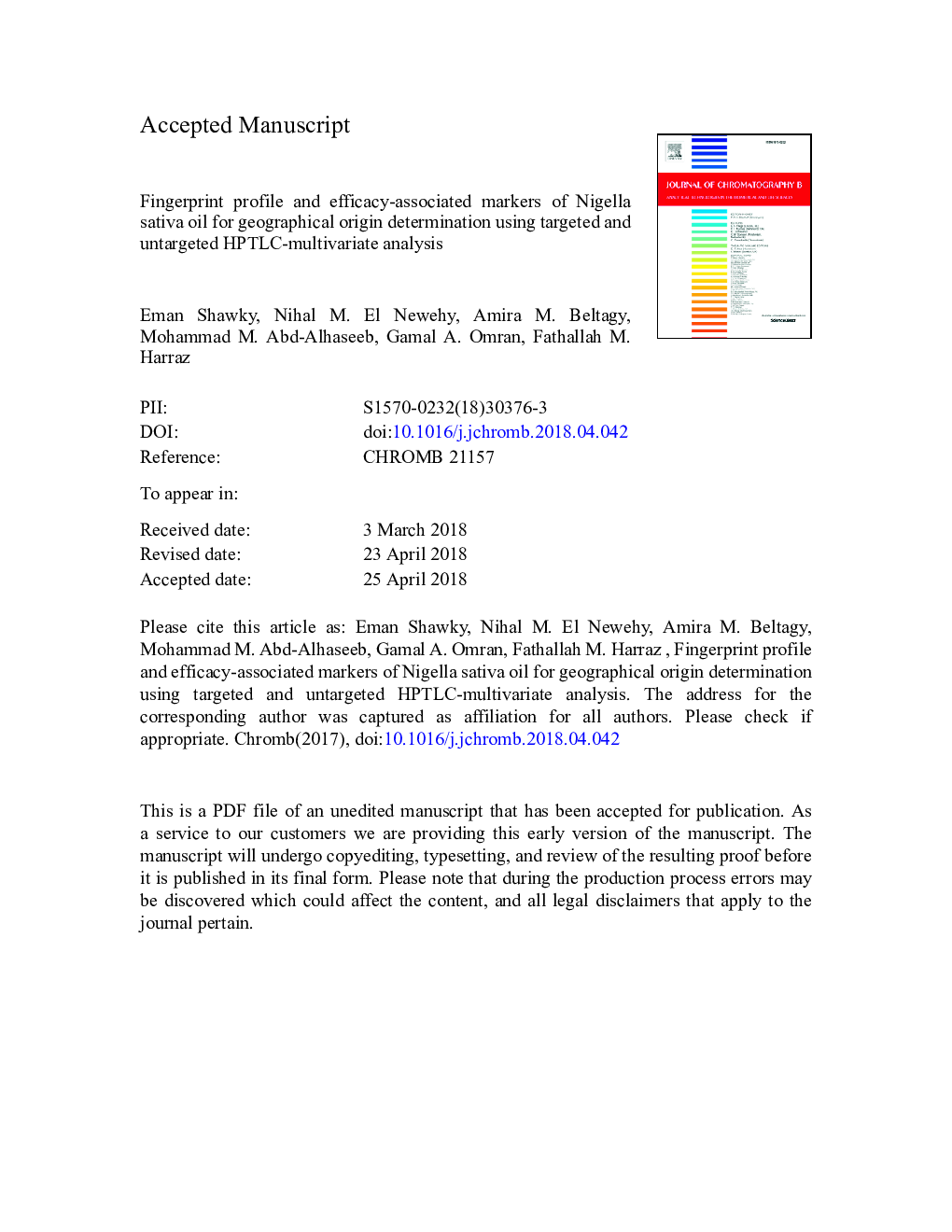| Article ID | Journal | Published Year | Pages | File Type |
|---|---|---|---|---|
| 7615067 | Journal of Chromatography B | 2018 | 31 Pages |
Abstract
Efficacy directed-fingerprint analysis of high-performance thin layer chromatography is proposed to set up fingerprint activity relationship modeling for precise discrimination of chemical and effective consistency of Nigella sativa oils from different geographical origins. A whole of 27 samples of N. sativa oils from three geographical area (Egypt, Ethiopia and Syria) were collected and their antimicrobial, cytotoxic, anti-inflammatory and analgesic activities were measured. The results revealed that there was significant difference in the biological activities of the oils collected. The fingerprints of the samples had been established by high performance thin layer chromatography, subsequently the data had been utilized for the discrimination of the samples geographical origin. The loading plots of HPTLC-Principal Component Analysis (PCA) had been used to discover the crucial marker ingredients for classification. Furthermore, targeted chemical fingerprints had been established by HPTLC, and discriminant analyses were calculated depending on five common characteristic peaks. The chosen markers were quantified by validated HPTLC methods, and then the quantitative data as well as the oils bioactive properties were subjected to partial least squares regression (PLSR) analyses. Thymoquinone and free fatty acids (FFA) were revealed as potential markers to distinguish the chemical consistency and efficacy of the oils from the three different geographical origins. The suggested technique provides an applicable integrated strategy to screen for efficacy-associated markers for discrimination of N. sativa oils from distinctive geographical origins exploiting HPTLC fingerprint activity relationship modeling.
Related Topics
Physical Sciences and Engineering
Chemistry
Analytical Chemistry
Authors
Eman Shawky, Nihal M. El Newehy, Amira M. Beltagy, Mohammad M. Abd-Alhaseeb, Gamal A. Omran, Fathallah M. Harraz,
